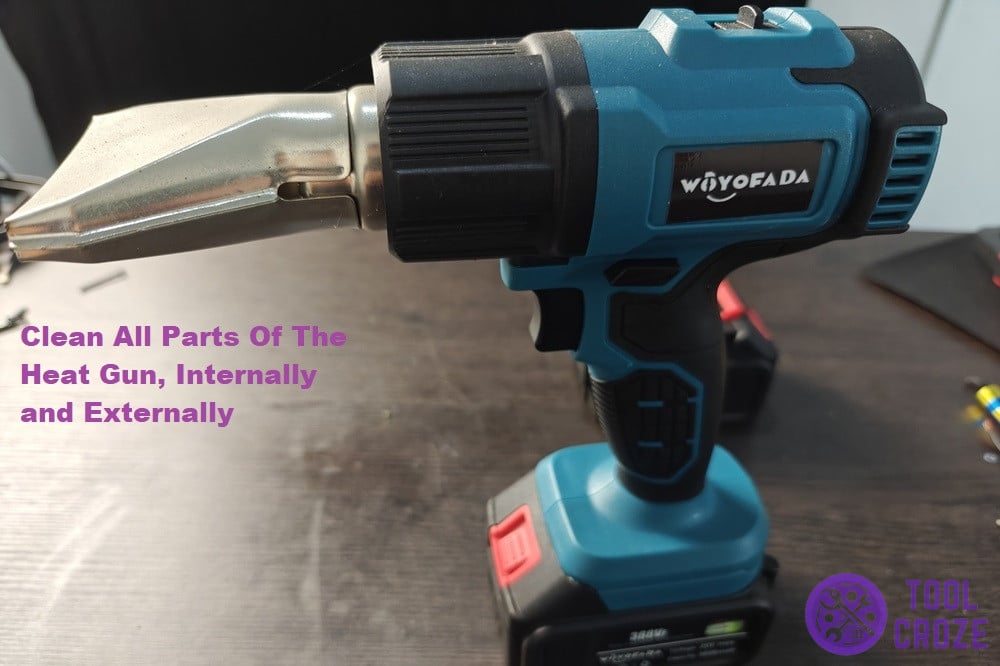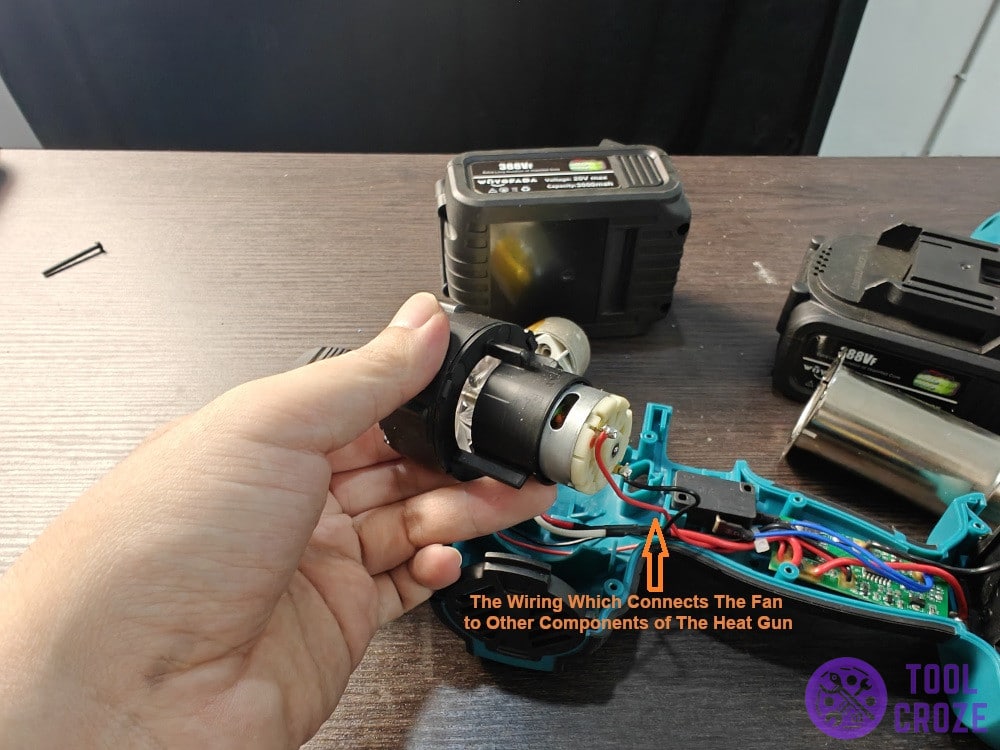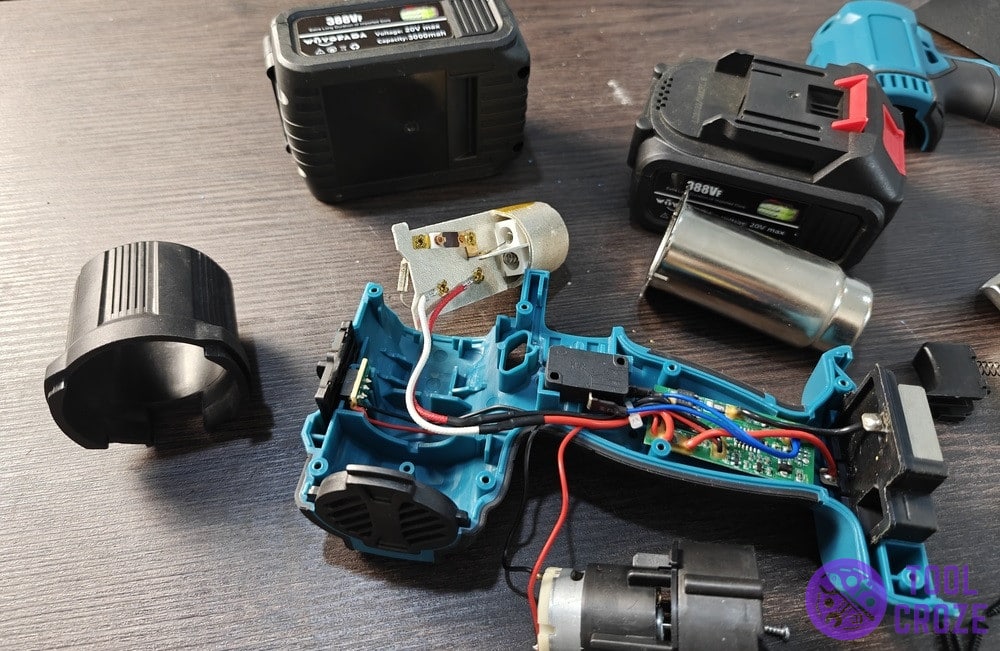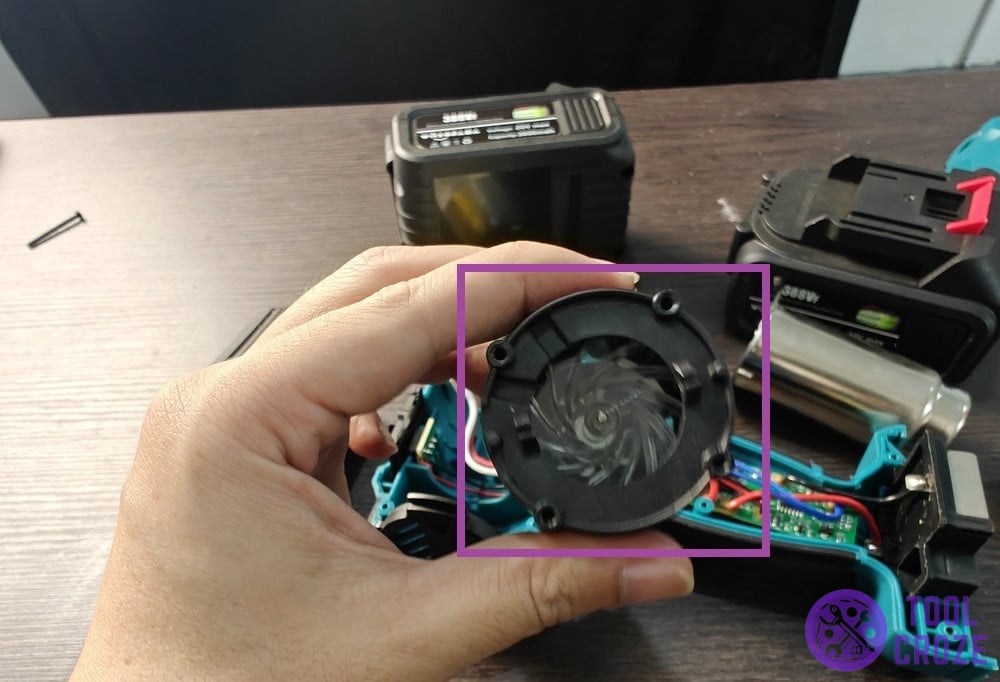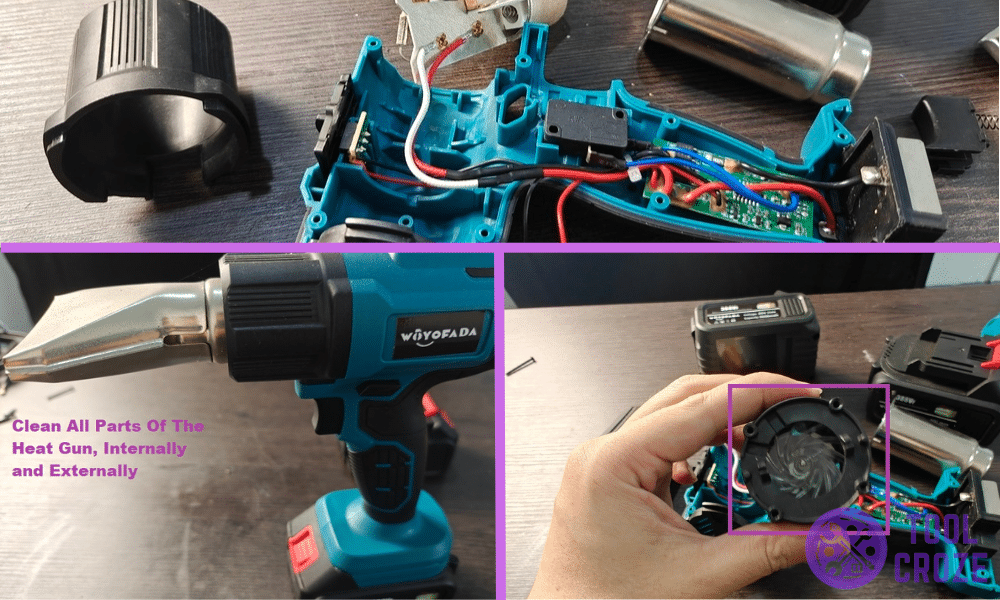
Even heat guns aren’t safe from the high temperatures they produce. But, the components inside are made with this in mind. That doesn’t do much when the fan on your heat gun is not working, though.
Without the fan to regulate airflow, temperatures inside will keep rising. Eventually, some wiring or a component will break permanently. So, let me help prevent this by getting the fan on your heat gun working again.
Read: Common Heat Gun Problems Troubleshooting
Heat Gun Fan Not Working – 3 Things To Try
- Clean The Fan
The one thing that stops most fans from spinning is an obstruction. These are really common, but they’re also really easy to deal with. That’s because usually you just need to clean well to fix these obstructions.
When it comes to the heat gun fan specifically, pieces of debris can burrow in there. These things eventually pile up until they are large enough to stop the fan from moving.
You can prevent this by regularly cleaning the device to maintain its airflow. Wipe the device on its surface regularly, and make sure to store it in a clean place.
You should also check the fan itself inside the device. Check all around it for anything that could be stopping its movement. Then just use something to blow on the fan and wipe its surface.
That should be enough to get rid of any major obstructions on fans as small as the ones used for heat guns.
- Wiring No Longer Good
The wiring on heat guns is quite susceptible to damage. Even though they’re tested and safe for use in high temperatures, these wires can only hold on for so long until they start getting damaged.
If you’ve had your heat gun a long time or use it in large bursts, this can happen. That’s because the long exposure to excessive amounts of heat is enough to melt the insulation.
Once the insulation melts, heat will have no problem getting to the rest of the wire. It will quickly start melting the remaining bits of the wire too, and render it useless.
The only way to confirm if this is the case or not is to open the heat gun and check inside of it, as I’m doing below. That way, you can take a good look at all of the wires and see if any have burning.
In case you find any kind of burning damage inside the device, the specific component you found the damage on will have to be replaced. But, I don’t recommend always doing that.
I have a video in which I completely disassembled a heat gun to show its internal mechanism. You can watch this video below.
In this video, you’ll see how a heat gun works. It has two main parts, the blowing motor and the heating coil. These two parts need to work together so that your heat gun will function properly.
If your heat gun is already a year or two old, don’t go through the hassle of repairing it. It will run into a lot more problems soon anyway.
It might be time to buy a replacement gun instead, which will serve you better for much longer.
But before you buy a replacement, you can try to fix the wiring on your heat gun using another heat gun. I’ve made a video about how you can do this and you can watch it below.
As you can see the process is quite simple. You just need a heat gun, pliers and plastic bottle cap to do this.
- The Fan Itself Is Faulty
Speaking of damage caused by the heat, wires aren’t the only thing that can burn. Entire parts of the heat gun can also fail because of high temperatures. This applies to the fan component too.
When it gets too hot, the fan mechanism can fail. There will likely be obvious burning or other kinds of damage when it happens.
You’re going to have to open the covers for this too. That’s because you’ll need to hold the fan in your hand, the way I’m doing in the picture below, to get a good look at it.
If you find any damage to the fan, I suggest not using the heat gun until you deal with it. Without the fan, there won’t be any airflow, and you’ll be risking your safety if you continue to use the device.
In some cases, the fan can be repaired or replaced pretty easily. But, if your heat gun is too old, do what I said earlier. Just get a replacement gun instead since it’s better for short-term and long-term.

